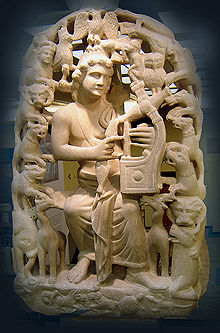Ionian School (music)
| Music of Greece | |
|---|---|
 |
|
| General topics | |
| Genres | |
| Specific forms | |
| Media and performance | |
| Music awards |
|
| Music charts | |
| Music festivals | |
| Music media |
|
| Nationalistic and patriotic songs | |
| National anthem | "Hymn to Liberty" |
| Regional music | |
| Related areas | Cyprus, Pontus, Constantinople, South Italy |
| Regional styles |
|
The term Ionian (or Heptanese) School of Music (Greek: Επτανησιακή Σχολή, literally: "Seven Islands' School") denotes the musical production of a group of Heptanesian composers, whose heyday was from the early 19th century till approximately the 1950s. Conventionally, it is divided in two periods: the First Generation (Πρὠτη Γενιά) from 1815, till the end of the 1860s, and the Second Generation (Δεύτερη Γενιά) from 1871 and onwards. Prominent representatives of this genre include Nikolaos Mantzaros, Spyridon Xyndas, Spyridon Samaras, Pavlos Carrer and Dionysios Lavrangas. The Music Museum of the Philharmonic Society of Corfu has in its collections several scores by these and other 19th and 20th century Ionian composers.
The major inspiration for the Ionian School was considered to be the Italian musical tradition. However, as late as the 1820s composers from Ionian Islands succeeded in shaping their own path towards 'national music' initially by using the Greek vernacular language, and later by incorporating folkore elements both from the local tradition and from that of mainland Greece.
...
Wikipedia
